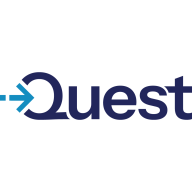

Erwin Evolve and erwin Data Modeler are distinct products in the enterprise architecture and data modeling categories, respectively. Erwin Data Modeler has a slight advantage due to its robust data management features highly rated by users.
Features: Erwin Evolve supports visualization of enterprise architectures, business alignment through strategic roadmaps, and includes a web module for organization-wide information browsing. It also integrates with external systems using the Collector tool for comprehensive architecture management. Erwin Data Modeler excels in detailed data modeling, metadata management, and integrates seamlessly with databases offering reverse and forward engineering. Its visual data models simplify complex data representation and support standards enforcement.
Room for Improvement: Erwin Evolve needs enhancements in web-only versions for robustness and alignment with enterprise frameworks. Improvements in user interface accessibility and smoother client-server transition are also desired. Erwin Data Modeler requires expanded database compatibility and improved model comparison speed for complex models. Enhanced documentation for newer users and more intuitive template systems could further improve its utility.
Ease of Deployment and Customer Service: Erwin Evolve delivers comprehensive deployment for large organizations with strong customer support for enterprise applications. Erwin Data Modeler stands out with an easy deployment process and proactive customer service ensuring smooth integration with existing databases.
Pricing and ROI: Erwin Evolve demands a significant initial investment that yields returns through streamlined operations and strategic alignment, particularly suitable for large organizations. Erwin Data Modeler offers competitive pricing with high ROI due to its enhanced data management efficiencies, making it appealing for data-centered strategies.
| Product | Market Share (%) |
|---|---|
| erwin Data Modeler | 7.8% |
| erwin Evolve | 3.2% |
| Other | 89.0% |


| Company Size | Count |
|---|---|
| Small Business | 14 |
| Midsize Enterprise | 3 |
| Large Enterprise | 33 |
| Company Size | Count |
|---|---|
| Small Business | 7 |
| Midsize Enterprise | 2 |
| Large Enterprise | 12 |
Erwin Data Modeler provides an effective approach to visualizing and managing data models. It assists in creating, reversing, and synchronizing data models with ease, supporting logical and physical transitions while enhancing understanding across teams.
Erwin Data Modeler is a comprehensive tool designed for professional database management. It offers capabilities to organize and enforce standards, automating script generation with robust reverse engineering and DDL output. Users can manage complex data environments, capitalize on integration with data intelligence, and maintain large-scale databases smoothly. Despite its strengths, improvements in multi-language support, database integration, and reporting features are needed. Users benefit from extensive support for conceptual, logical, and physical database modeling, enhancing architectural design and data governance for platforms like SQL Server, Oracle, and Teradata.
What are the key features of Erwin Data Modeler?Erwin Data Modeler finds application in industries focused on robust data management, implementing it for enterprise data warehouses, business domain models, and operational systems. It supports architectural design and governance, aligning with business applications demanding precise data representation and visualization.
erwin Evolve provides comprehensive graphical support for handling large data models. It offers features such as metadata access, version control, and model comparison, enhancing operational reports and system analytics through its collaborative web-driven design.
erwin Evolve facilitates reverse engineering and database integration, fostering collaboration and process exploration through its web interface. Customizable and easy to configure, it supports workflow configuration and architectural modeling. Users can utilize its capabilities for developing industry models, managing transformation programs, and presenting standard operating procedures. Despite its strengths, there are demands for improved integration, enhanced UML support, and a more modern user experience. Users also express challenges with legacy system updates and call for better connectors and collaborative features.
What are the key features of erwin Evolve?Data-driven organizations in sectors like finance and healthcare implement erwin Evolve for data warehousing, enterprise architecture, and business process modeling. They leverage its capabilities for cataloging architectural elements, linking to CMDBs, analyzing system interfaces, and describing business processes. Utilization extends to IT solution registration, business capability planning, and strategic modeling, with frequent deployments on cloud platforms to support transformation initiatives.
We monitor all Enterprise Architecture Management reviews to prevent fraudulent reviews and keep review quality high. We do not post reviews by company employees or direct competitors. We validate each review for authenticity via cross-reference with LinkedIn, and personal follow-up with the reviewer when necessary.